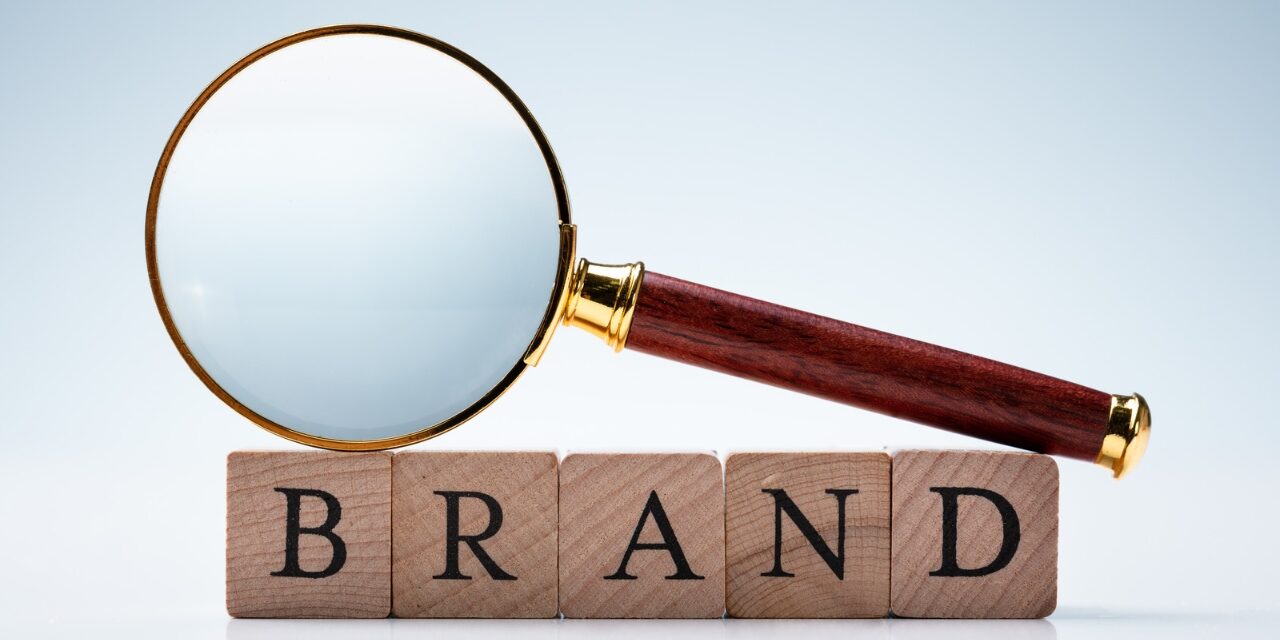Introduction
Welcome to this comprehensive guide on conducting a brand audit. As a coach, consultant, or expert, you understand that your brand is more than just a logo or tagline. It’s an embodiment of your identity, your value proposition, and the promise you make to your clients. However, maintaining a consistent and impactful brand isn’t a one-time effort—it requires continuous assessment and adaptation.
That’s where a brand audit comes in.
A brand audit is an in-depth analysis of your brand in its current state. It unveils how your brand is truly perceived, identifies its strengths and weaknesses, and provides insights into opportunities for improvement. By comparing your brand’s actual position in the market with your desired position, a brand audit allows you to align your brand identity with your business objectives effectively.
In this blog post, I’ll guide you through the process of conducting a comprehensive brand audit, highlighting its importance and offering practical steps to help you ensure that your brand is making the right impression. Whether you’re facing branding challenges or just aiming for continuous improvement, this guide is for you. Stick around to unlock your brand’s full potential.
Understanding the Concept of Branding
Before diving into the intricacies of a brand audit, let’s first unpack the concept of branding. Branding is the practice of creating a name, symbol, or design that differentiates your services from others in the market. It’s your professional signature, the one aspect that sets you apart from the crowd in your field. As a coach, consultant, or expert, your brand goes beyond aesthetic elements; it includes your reputation, the quality of your services, and the experience you provide to your clients.
Fundamentally, your brand is a promise. It’s an assurance to your clients about the quality and type of services they can expect from you. It communicates your core values, your unique approach, and your commitment to fulfilling your clients’ needs. It builds trust, establishes credibility, and fosters client loyalty. In other words, your brand serves as a roadmap that guides your clients towards choosing your services.
Key elements of a strong brand include a compelling brand story, a distinctive visual identity (including a logo and color scheme), a clear value proposition, and a consistent brand message. These elements, when combined effectively, create a memorable brand that resonates with your target audience and influences their perception of your services.
Understanding your brand is the first step to performing an effective brand audit. Remember, a brand isn’t just what you think or say about your services—it’s what your clients think and say about you. Therefore, it’s crucial to perceive your brand from your clients’ perspective, which will ultimately help you evaluate the efficacy of your brand during the audit process. With this foundational understanding of branding, let’s explore why you need a brand audit and how to conduct one.
The Need for a Brand Audit
In today’s dynamic market, being a successful coach, consultant, or expert requires more than just delivering high-quality services. It also requires continuously adapting to changes in client behavior, industry trends, and competitive landscapes. One essential tool that can help you navigate this shifting terrain and maintain a robust brand is a brand audit.
A brand audit is crucial for three main reasons.
Firstly, it allows you to identify inconsistencies in your brand. Over time, it’s easy for your brand elements to become disjointed, especially if you’re expanding your offerings or venturing into new markets. An audit helps you find these inconsistencies in your branding strategy, giving you a chance to unify your brand’s message and image across all platforms.
Secondly, a brand audit offers valuable insights into your brand’s perception. Your brand is shaped not just by what you communicate, but by how your clients perceive and interact with your brand. An audit gives you a reality check, revealing whether your brand’s perception aligns with your desired image, and if your branding efforts are resonating with your target audience.
Lastly, an audit ensures your brand aligns with your business goals. As your professional journey evolves, so should your brand. An audit can help you assess if your current brand strategy aligns with your vision and objectives, helping you to stay on track and remain relevant in the eyes of your clients.
In essence, conducting a brand audit is about seeking truth and clarity about your brand. It’s about challenging your assumptions, uncovering gaps, and identifying opportunities to strengthen your brand. By understanding where your brand stands today, you’re better equipped to guide it towards where you want it to be tomorrow. This forms the basis for conducting a comprehensive brand audit, which we’ll delve into next.
Key Components of a Brand Audit
Performing a brand audit involves scrutinizing three essential aspects: your internal brand, your external brand, and your competitive landscape. Let’s discuss each one in detail.
1. Internal Brand Audit:
- An internal brand audit focuses on your brand’s core identity – its mission, vision, and values. This is where you evaluate if your brand narrative is compelling and consistent, and if it aligns with your actual service offerings. You assess your brand’s voice and messaging – is it unique, clear, and relevant to your target audience? Additionally, the internal audit examines your visual identity, including logos, colors, typography, and imagery, to ensure they are consistent and effectively convey your brand’s personality.
2. External Brand Audit:
- This part of the audit assesses how your brand is perceived by your audience. It entails reviewing your online presence, including your website, social media platforms, and other online profiles. You’ll examine how effectively your website communicates your brand message and whether it provides a user-friendly experience. The audit will also take into account your social media activities – are you engaging with your audience and sharing content that resonates with them?
- Customer feedback plays a pivotal role in the external brand audit. Collecting and analyzing reviews, surveys, or testimonials can provide valuable insights into how your clients perceive your brand. Understanding your brand’s perception from your clients’ viewpoint can help you identify areas of strength and potential improvement.
3. Competitive Brand Audit:
- Finally, a brand audit should include an analysis of your competitors’ branding strategies. This doesn’t mean copying what others are doing; rather, it’s about understanding the branding landscape in your niche. This process helps identify what works, what doesn’t, and how you can differentiate your brand. You’ll look at their brand messaging, visual identity, online presence, and customer perception.
Each of these components contributes to a comprehensive understanding of your brand’s current position. They allow you to view your brand from different angles, offering a multifaceted picture that helps you make informed decisions about your branding strategy. In the next section, we’ll delve into the actual process of conducting a brand audit, using these key components as our guide.
Step-by-step Guide to Conducting a Brand Audit
Conducting a brand audit might seem daunting, but it’s essentially a structured process that can be broken down into manageable steps. Here’s a step-by-step guide to help you through it:
1. Assemble the Audit Team:
- A successful brand audit often requires a team effort. Your team could include key members from your business such as marketing, customer service, and operations. If you’re a solo consultant, consider seeking help from a mentor, peer, or even a professional brand auditor.
2. Set Clear Objectives for the Audit:
- What do you hope to accomplish with the audit? Your goals might include identifying brand inconsistencies, understanding client perception, aligning your brand with business goals, or gaining a competitive edge. Having clear objectives will guide your audit process and help you stay focused.
3. Gather and Analyze the Data:
- Start with the internal audit, examining your brand elements such as your mission, vision, values, messaging, and visual identity. For the external audit, gather data about customer perception through surveys, interviews, social media interactions, and online reviews. For the competitive audit, analyze your competitors’ branding strategies.
4. Review Brand Materials and Channels:
- Evaluate all your brand touchpoints including your website, social media profiles, marketing materials, client communications, and more. Look for consistency in messaging, visuals, and the overall customer experience.
5. Collect Customer Feedback and Perception:
- Engage directly with your customers to understand their perception of your brand. Use methods like surveys, interviews, or informal conversations. Ask about their experiences with your brand, their understanding of your brand message, and their suggestions for improvement.
6. Analyze Competitor Branding:
- Examine how your competitors are branding themselves. Look at their messaging, visual identity, customer engagement, and overall online presence. Use these insights to identify potential areas where you could differentiate your brand.
7. Evaluate the Findings and Identify Gaps:
- Once you’ve collected and analyzed all the data, it’s time to evaluate your findings. Identify gaps between your current brand position and your desired brand position. Do your internal and external perceptions align? Is your brand unique in the market? Are there any inconsistencies in your branding?
The results of your audit will provide you with a clear understanding of your brand’s current status and potential areas of improvement. It’s essential to approach this evaluation with an open mind. The objective is not to validate your preconceptions but to reveal the truth about your brand’s position and perception.
Conducting a brand audit is a powerful exercise that uncovers the reality of your brand. It’s a journey of discovery that, when approached with curiosity and openness, can unlock valuable insights to guide your brand strategy. With the completion of your brand audit, you’ll be equipped to refine your brand, ensuring it accurately reflects who you are, resonates with your target audience, and stands out in the competitive landscape.
Case Study: Successful Brand Audit
To better illustrate the power of a brand audit, let’s consider a case study of a successful brand audit conducted by an executive coach.
Jane Doe is an executive coach who had been in business for five years. Despite her professional success and a strong clientele base, she felt her brand was disjointed and didn’t accurately reflect her services and expertise. She decided to conduct a comprehensive brand audit to clarify her brand’s position.
- Step 1: Jane assembled a team, including her assistant, a freelance graphic designer, and a trusted peer in her network.
- Step 2: She set clear objectives: to identify brand inconsistencies, understand how her clients perceive her brand, and align her brand with her business goals.
- Step 3: Jane collected data through various means. Internally, she reviewed her brand elements, messaging, and visual identity. Externally, she surveyed her clients to understand their perception of her brand.
- Step 4: Jane reviewed her website, social media profiles, newsletters, and client communication materials for brand consistency.
- Step 5: Through client feedback, Jane discovered that while she positioned herself as an executive coach, her clients viewed her as a career strategist due to the comprehensive guidance she provided beyond executive coaching.
- Step 6: She then evaluated her competitors’ branding. She identified unique elements in their branding and areas where she could stand out.
- Step 7: After analyzing the data, Jane discovered a gap between her current brand identity and how her clients perceived her services. She realized her brand didn’t adequately reflect the full scope of her services and the value she provided.
Acting on the findings of her brand audit, Jane rebranded herself as a career strategist and executive coach, emphasizing her holistic approach to career development. She redesigned her visual identity, refined her messaging, and updated her marketing materials and online profiles to align with her new brand identity.
The results were impressive. Jane noticed increased client engagement, her services resonated more with her target audience, and she attracted clients who were looking for comprehensive career guidance, not just executive coaching.
Jane’s story is a testament to the power of a brand audit. It provides valuable insights that can lead to transformational changes in your brand and business. The next section will guide you through the steps to take after conducting your brand audit.
Implementing Changes After the Brand Audit
Once your brand audit is complete, the real work begins: implementing the changes that will align your brand with your business objectives and market perception. The brand audit has provided a clear picture of your current brand status, and the insights gained should serve as the roadmap for your brand’s evolution. Here’s how to proceed:
1. Prioritize Your Actions:
- You’ll likely emerge from the audit with a list of potential improvements. Start by prioritizing these actions based on their potential impact and feasibility. Quick wins that can significantly improve your brand perception should be high on your list.
2. Develop a Brand Strategy:
- Using the insights from the audit, develop a comprehensive brand strategy that aligns with your business goals and target audience. This should cover your brand’s mission, vision, values, messaging, visual identity, and customer engagement strategies.
3. Communicate Changes:
- When rebranding, it’s crucial to keep your existing clients informed about the changes and what they mean. This helps manage their expectations and maintains trust in your services.
4. Implement Changes Consistently:
- Once you’ve established your new brand strategy, implement it consistently across all platforms and touchpoints. This includes your website, social media, marketing materials, and customer communications.
5. Monitor and Adjust:
- Implementing changes after a brand audit isn’t a one-and-done activity. Monitor how your target audience responds to your new brand strategy, and be open to making adjustments as needed. This might involve gathering additional client feedback, analyzing engagement metrics, or even conducting mini-audits periodically.
Implementing changes after a brand audit requires time, effort, and a commitment to continual improvement. However, the rewards of a brand that accurately reflects your business, resonates with your audience, and stands out in the market make it well worth the effort. With the insights gained from your brand audit, you’ll be well-equipped to refine and enhance your brand for maximum impact.
The Role of Brand Audit in Continuous Improvement
In an ever-evolving market landscape, continuous improvement is the key to staying relevant and competitive. A brand audit plays a crucial role in this process, serving as a strategic tool for identifying opportunities for enhancement and fostering ongoing development in your branding efforts.
A brand audit gives you the unique opportunity to step back and objectively analyze your brand from multiple perspectives. It’s a reflective process that compels you to question the status quo, identify gaps, and address weaknesses. By providing a comprehensive snapshot of your brand’s current state, it illuminates the path towards improvement and growth.
Here’s how a brand audit contributes to continuous improvement:
1. Ongoing Relevance:
- Regular brand audits ensure that your brand remains relevant in the face of shifting client preferences, industry trends, and competitive pressures. It enables you to stay attuned to these changes and adapt your brand strategy proactively.
2. Consistency
- Brand consistency is critical in building recognition and trust with your audience. Periodic audits help you identify and correct any inconsistencies across your brand touchpoints, thus maintaining a cohesive brand experience for your clients.
3. Client-Centric Approach:
- A brand audit focuses not just on your internal branding efforts but also on external perceptions. By considering your clients’ perspectives, an audit helps you ensure that your brand resonates with your target audience, fostering a client-centric approach that drives continuous improvement.
4. Competitive Advantage:
- By including a competitor analysis in your brand audit, you gain insights into the branding strategies of others in your field. This knowledge enables you to differentiate your brand, seize opportunities, and gain a competitive edge.
5. Alignment with Business Goals:
- As your business evolves, your brand needs to keep pace. Regular audits ensure that your brand aligns with your current business goals, values, and vision, helping to guide your strategic decisions.
In essence, a brand audit is not just an exercise in understanding your current brand state. It’s an ongoing process of learning, adapting, and improving. By incorporating brand audits into your strategy, you embrace a culture of continuous improvement that empowers your brand to thrive in an ever-changing market.
Conclusion
The role of a brand extends far beyond a catchy logo or a compelling tagline. It represents your business’s heart and soul – your values, your mission, your unique selling proposition, and the promise you make to your clients. As a coach, consultant, or expert, your personal brand is a powerful tool for connecting with your audience and differentiating yourself in the marketplace.
A brand audit is a strategic exercise that helps you assess and refine this crucial aspect of your business. It provides you with valuable insights into your current brand status and uncovers opportunities for enhancement. By embracing a culture of continuous improvement through regular brand audits, you ensure that your brand stays relevant, resonates with your audience, and aligns with your business goals.
Starting your brand audit journey may seem overwhelming, but the benefits are immense. Armed with the knowledge from this guide, you’re ready to embark on your own brand audit. Remember, this process isn’t about attaining perfection but about striving for continuous improvement and growth.
Take this opportunity to reflect, reassess, and realign your brand. The insights you gain from a brand audit can be transformative, paving the way for a stronger, more resonant brand and a thriving business.
Call to Action
Are you ready to dive deep into your brand and unearth valuable insights that can propel your business forward? The time to start is now. Use the information shared in this blog post as a roadmap to conduct your own brand audit.
Begin by assembling your team, setting your objectives, and collecting the necessary data. Evaluate your findings with an open mind and be ready to implement changes based on your insights. This journey may challenge your preconceptions, but it will ultimately lead to a more powerful and impactful brand.
Remember, a brand audit isn’t a one-off exercise; make it a part of your business’s continuous improvement strategy. Regularly reevaluate your brand to ensure that it remains aligned with your vision, resonates with your audience, and stands out in your niche.
Feel free to share your experiences, challenges, and victories along the way in the comments section below. Your journey could inspire others and foster a collective spirit of continuous learning and improvement among fellow coaches, consultants, and experts.
Ready to unlock the true power of your brand? Take the first step today, and let the brand audit be your guide. Your stronger, more resonant brand awaits!











